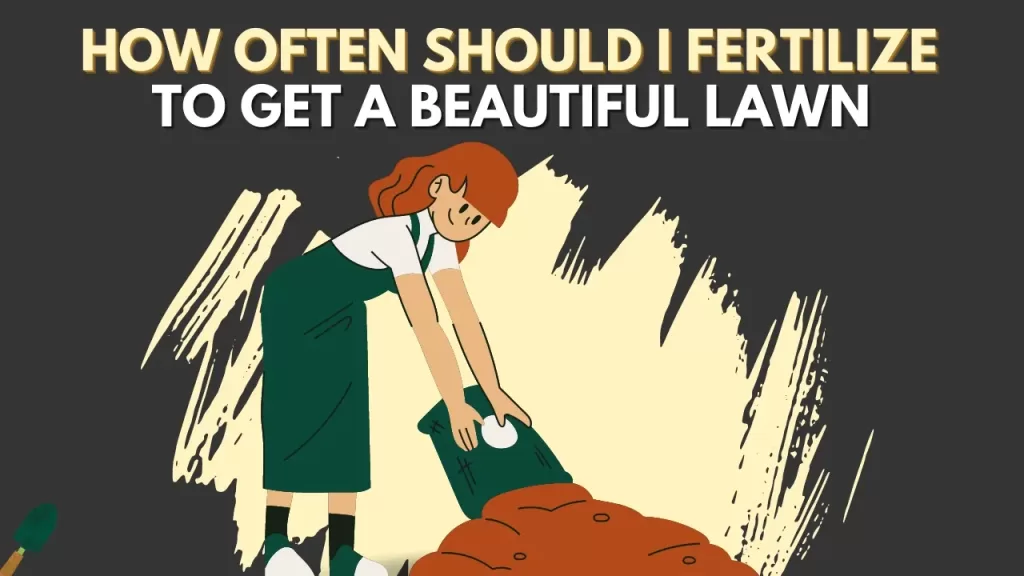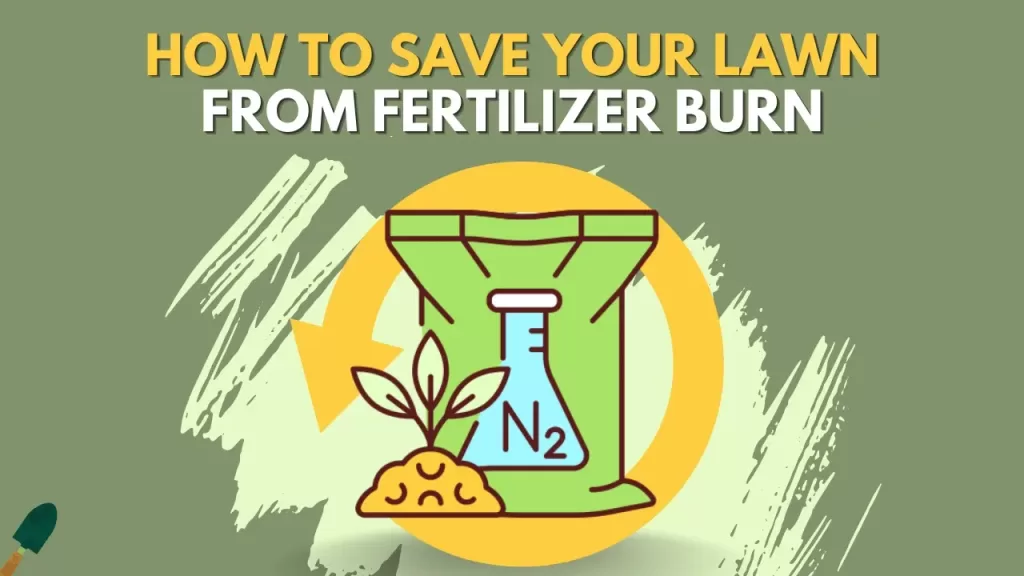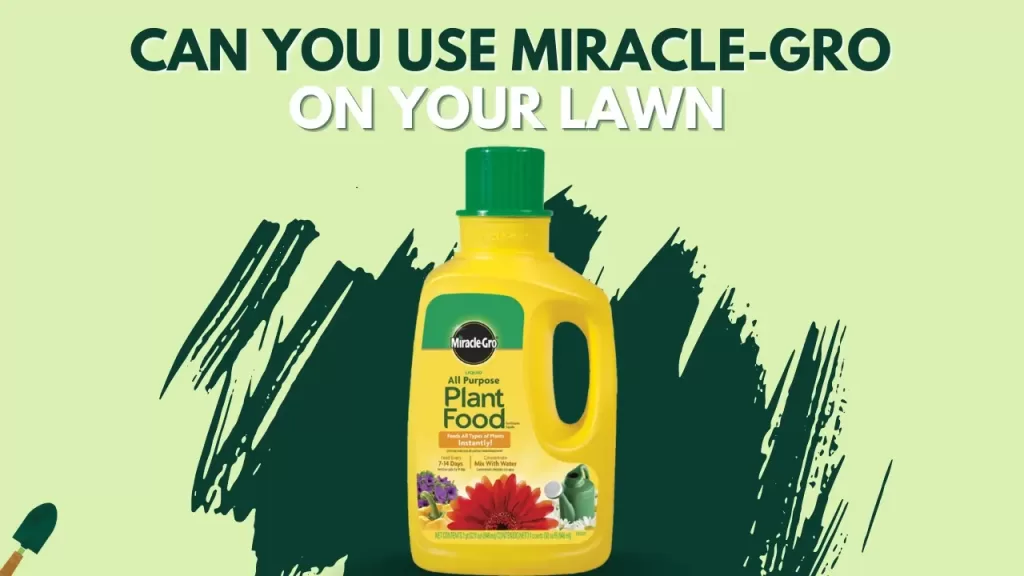Fertilizing the lawn in the fall season is a really crucial part of lawn care as the lawn will go into dormancy and will need food and a good root system to survive and come back healthy and thick in the spring. But what fertilizer number to choose in the fall?
The best fertilizer number to fertilize the lawn in the fall is 23-23-4. This has a good amount of nitrogen to provide food as well as phosphorus to promote root establishment and a little bit of potassium to boost the process. This fertilizer number will help the lawn to grow as well as prepare for the dormancy period.
Now you know what fertilizer number to use in the fall, but it’s not that simple. So let’s understand why this number is used and what is the best way to fertilize your lawn.
What are these numbers on fertilizer?
The numbers you see on fertilizer is to help you determine what type of fertilizer you need for the lawn to keep it healthy and beautiful. These numbers indicate the percentages of different nutrients available in the pack which is crucial for the growth of the grass. These numbers indicate the percentage or ratio of NPK in the bag. So what does NPK mean?
What does NPK mean?
The N-P-K expands for Nitrogen, Phosphorus, and Potassium, where N stands for Nitrogen, P for Phosphorus, and K for Potassium as these are the chemical notations of these elements.
- Nitrogen – Nitrogen is a very essential nutrient for the lawn or any plant as it helps the plant by giving the food that it requires to grow. Nitrogen also helps the plant to do photosynthesis by helping in making chlorophyll which is the reason behind the green color in grass or different plants. This is the reason why every fertilizer has a high percentage of nitrogen.
- Phosphorus – Phosphorus is a key element in helping the grass to face the heat and drought conditions in the summer. Phosphorus helps the plant by boosting deep root growth which helps the grass to absorb more food and moisture from the soil when in drought-like conditions. This growth due to phosphorus also helps the grass when it goes into dormancy period and had to go through stress.
- Potassium – Potassium is a substance that helps the lawn to produce food easily boosting the growth of the grass or plant. Potassium also helps the plant to strengthen itself and to fight fungus and other diseases in the soil. Potassium also helps the plants to absorb nutrients and water from the soil easily.
Where to find the NPK number on the fertilizer?
Finding the NPK numbers on fertilizers is fairly easy as it is written on the front of the pack or sometimes associated with the name just like “Pennington Ultragreen Starter Fertilizer 22-23-4”. So finding the NPK number on the pack will not be a problem for any lawn owner.
If by any chance it is not mentioned on the front of the pack or associated with the name itself, it will surely be written on the label on the back with the recommendation guide on how to use it on the lawn.
What Fertilizer number to use in the fall?
The best fertilizer number to use in the fall season will be where the nitrogen and phosphorous are in high percentage as nitrogen will help the grass to recover from the harm and stress of the long and hot summer days and the phosphorous will help the roots to establish and prepare themselves for the coming winter and the dormancy period. A little amount of potassium is necessary to help the process and grow faster.
So the best fertilizer number will be 22-23-4 to apply to the lawn in the fall. I use “Pennington Ultragreen Starter Fertilizer 22-23-4” as fall fertilizer in my lawn as it has everything the lawn needs in the fall season.
This is an idol fertilizer for fall, but sometimes the condition of the lawn is not as we expected so different lawn needs different fertilizer number. Let’s have a look at it in detail:
- New lawn – if you are starting a new lawn in the fall then it needs a high amount of nitrogen and phosphorous to grow faster as well as the root to establish before the winter season comes and the lawn goes into dormancy and stress. So 22-23-4 is a good fertilizer number for the new lawn and will give the lawn all the things it needs. You can use “Pennington Ultragreen Starter Fertilizer 22-23-4”.
- Old lawn – if you have a fairly established lawn that has a good root system with good grass and no bare patches then your lawn just needs a good amount of food to grow in the fall and stay healthy before the dormancy period. The best fertilizer number for this lawn is 32-0-4 as nitrogen will help the grass to grow and potassium will help boost the process.
- Poor lawn – if your lawn is in poor conditions with bare patches and unhealthy grass then it needs a high amount of nitrogen as well as phosphorous to have a good establishment in the soil. It also needs some other nutrients like potassium to keep away the diseases. “Pennington Ultragreen Starter Fertilizer 22-23-4” is a very good fertilizer for a poor lawn as it helps the lawn to regrow and have additional nutrients which the lawn needs.
When to fertilize the lawn in the fall?
The best time to fertilize the lawn in the fall is between late August to early September. This is the time when the grass is recovering from the stress and heat of the summer and would have exhausted all the nutrients from the soil. It will encourage the grass to grow and establish and prepare for the winter dormancy as well.
How to fertilize the lawn in the fall?
Fertilizing the lawn is simple if you take care of a few things. The moisture of the soil and the timing. Let’s take a step by step guide on how to fertilize your lawn in the fall:
- Make the soil moist – the first thing before the fertilization is to make the soil moist so that it can absorb the fertilizer well and there is no chance of fertilizer burning the grass due to dryness. Water the lawn 1 or 2 days before so that it is not wet when you apply the fertilizer as you can compact the wet soil while applying the fertilizer.
- Check the label – before applying the fertilizer, check the label of the fertilizer you are using and see the recommended quantity to use in your lawn, and apply the fertilizer according to it as you don’t over-fertilize the lawn.
- Apply the fertilizer – to apply the fertilizer, first, divide the fertilizer in half and apply one batch of the fertilizer and then apply the second one perpendicular direction so that you cover the whole lawn properly and no area is over or under fertilized.
- Water the lawn – after you have applied the fertilizer. Water the lawn normally to make the fertilizer get into the soil and release the nutrients immediately. Don’t overwater the lawn as the fertilizer can wash away with the excess water and ruin all your efforts.
Hope you now know what fertilizer number to use in the fall season. Get Set Gardening!





